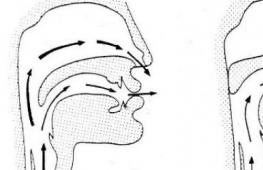All-Russian Olympiad for schoolchildren. school stage
This is a very common problem when the slots for a screwdriver are ground off a screw, screw or self-tapping screw.
This can happen for various reasons: the wrong screwdriver was chosen, the force was not applied correctly, and so on. As a result, it would seem that the situation is almost hopeless and you will have to make a lot of efforts to unscrew, for example, a screw with licked edges.
It's not always as difficult as it might seem. I will show you a very simple way to remove a worn-out self-tapping screw. And for this you will not need absolutely any wise materials and tools.
An easy way to unscrew a licked screw
All you need is a small piece of rubber or rubberized material. Suitable: medical tourniquet, rubber from the camera of a bicycle or car, rubber ball, etc.In general, we cut out a small rectangle from what we have. We put on top of the licked self-tapping screw. We rest with a screwdriver and slowly begin to unscrew.
 Yes, it's that simple! The main thing is to direct more effort to pressure from above on the self-tapping screw.
Yes, it's that simple! The main thing is to direct more effort to pressure from above on the self-tapping screw. 
After a few turns in the rubber band, the edges can be printed and the screwdriver will start to scroll. To do this, transfer the rubber band to a new surface and continue to unscrew the screw further.
I did this with a harness and a bike tube folded in half. The result is excellent, everything unscrews without problems.

It was the easiest way to unscrew a licked screw without the use of drilling and other tricky devices. Also the fastest. So friends, take advice on arms.
Watch the video
If you do not quite understand how to act - watch the video.
In this hack you will learn how to unscrew a screw with torn edges And unscrew even hexagonal screw with the help of not cunning manipulations.
We all know that in the modern market the quality of products is falling and falling. Someone connects with the desire to reduce costs, someone with a shorter service life and therefore a replacement for the same product or a more “modern” one. I can’t say anything, but lately I often wonder how to remove a broken screw on a laptop or other household appliances, because by twisting and unscrewing it several times, in a modern laptop, you are likely to break the slots, and this is very unpleasant. In fact, such a problem occurs not only in household appliances and electronics, but also in many areas where fasteners are used, and now we will explain how to unscrew a screw with a torn slot.
How to unscrew a broken screw
To do this, we will take several options.
1. The most rude, but in most cases helping. Just push the screwdriver in the direction of the screw and turn with enough force, so the friction will increase and therefore there is a good chance, slowly but surely unscrew the head screw.
2. Of course, this is not the most delicate method, and for fragile things, such as laptops and TVs, it is not very suitable, because there is a chance to damage the device. In that case we will try unscrew the screw with a torn cross heating it (for example, with a soldering iron), and therefore making the case plastic softer. Of course, this is not suitable for all cases, but to disassemble the butovuha, they often use it.
3. Use electric screwdrivers and screwdrivers. Due to the much higher number of revolutions per minute than can be done with a conventional screwdriver, a screwdriver will quickly unscrew even an almost dead screw.
4. If none of the above methods helped you, then I advise you to use a rubber band (for money). Putting it between the hat and the screwdriver with a rubber band and with ease unscrew the screw with a torn off head even without the use of power tools.
5. It can be applied when the screw head is more like a nail head. We take a needle file or a triangular file and create a grit or two again. In order not to damage the rest of the surface, try to raise the screw at least a little above its level, but simply speaking, unscrew it a little.
Now you know what to do with the spoiled cross head, how to unscrew (unscrew) a screw with torn edges, little or large, it doesn't matter.
Quite often it happens that the edges of fasteners break during construction work. Usually this happens at the most inopportune moment when you need to have time to finish the job on time. How to unscrew a screw with torn edges? Why are there such troubles? What solutions fix the problem? We will talk about all this later in the article.
Why do the edges on the fastener break off?
Before we figure out how to unscrew a stripped star screw, let's highlight a number of reasons why the problem occurs. Most often, the trouble is caused by the use of low-quality tools. It's about on the use of a screwdriver or a screwdriver bit with an insufficiently sharp sting. In this case, the tight contact of the tool with the notches of the fastener disappears. Therefore, so that in the future you do not have to be puzzled by the question of how to unscrew a screw with torn edges, before performing work, you need to make sure that the tip of the screwdriver is completely immersed in the grooves.
Another reason is non-compliance with the technology of screwing fasteners. Trouble occurs when the worker does not apply enough pressure on the tool. Sometimes the location of the screwdriver tip at an angle to the screw head leads to a problem.
It is easy to guess that this can happen due to the poor quality of the materials from which the fasteners are made. Individual units may also have notch defects. In order not to have to look for a solution on how to unscrew a screw with torn edges, before buying fasteners, you should take an interest in its technical characteristics and make a visual inspection.
What is the first thing to do if there is a problem?

When the tip of the screwdriver starts to jump off the cap of the fastener, the first thing to do is stop. So that the trouble does not become even larger, you should not be persistent, repeating your own mistake. Otherwise, you can simply damage the material into which the fasteners are screwed, without achieving the desired result.
Next, you need to check how things will go with the use of another screwdriver. You should take a tool with an unworn sharp sting and try to non-violently remove the naughty fasteners. How to unscrew a screw with torn edges, if such actions do not help? In this case, it is worth using proven methods to fix the problem, which will be discussed later in the article.
Fastener head crimp
How to unscrew a screw with stripped edges? If its head protrudes above the surface of the material, it is worth using pliers, a gas wrench or round-nose pliers. It is enough to grab the screw with one of these tools and try to turn it. Unscrew the fasteners in this case in a counterclockwise direction.
Thread restoration

How to unscrew a screw with torn edges? You can try to make a new thread on the fastener head yourself. To do this, you should use a hacksaw for metal with the thinnest blade possible. An alternative option is to use a miniature grinder. The cut should be made with extreme care so as not to completely destroy the screw head.
Drilling a screw
How to unscrew a small screw with torn edges? If no gentle method gives a result, it is worth taking drastic measures. We are talking about drilling fasteners to its base. It is recommended to use an automatic drill with a drill for metal for this purpose. Gradually, layer by layer, fasteners will be removed from the thickness of the workpiece.
Increasing friction force

To increase the adhesion between the tip of the screwdriver and the cap of the fastener, it is enough to put auxiliary material between them. You can use here a piece of metal wool, rolled tape, a thin strip of rubber. One of these materials should be applied to the damaged head of the screw and again try to remove it using a conventional screwdriver.
Fastener heating
How to unscrew a screw with torn edges? You can fix the problem by heating the fasteners. It is only necessary to resort to a solution if there is a minimal risk of damage to the material where the screw is screwed. Heating will expand the metal. When it cools, space will be released in the structure of the workpiece, which will weaken the grip.
To achieve the goal, you can use a gas burner or a building hair dryer. During the event, the device must be constantly in motion. Otherwise, the temperature may be too high and the material will be damaged. As soon as the fastener becomes hot to the touch, it is necessary to stop heating. After the screw has cooled down, you need to try to unscrew it with the help of improvised means, for example, capturing the head with the same pliers.
Application of the extractor

The solution to the problem can be an extractor. The tool is a kind of screwdriver, the tip of which contains a reverse thread. On the opposite side of the device there is a perpendicular crossbar, with which you can rotate.
First, you need to make a notch on the head of the fastener using a center punch and a hammer. The mark should be strictly in the center. Using a drill for metal, make a small hole in the head.
Next, you need to use the extractor itself. The tip of the tool should be inserted into the prepared notch and hit on its reverse side with a hammer. It is necessary to tap on the extractor until it is firmly fixed in the head of the fastener. Then you need to turn the device several times. As soon as the reverse thread of the extractor is firmly rooted in the structure of the material, you can begin to extract the screw.
Glue
You can try to remove a screw with torn edges using glue. The latter must be applied to the head of the fastener and attach a nut of the appropriate diameter here. An epoxy metal adhesive known as "cold welding" is recommended. As soon as the substance hardens well, it is necessary to put a wrench on the nut and turn the fasteners.

When doing work, you should use a few tips:
- Before resorting to drastic measures, it is worth examining reverse side workpiece into which the screw is screwed. Perhaps the tip of the fastener peeks out from the inside. In this case, you can grab it with pliers and try to unscrew it from the inside.
- Getting down to business, you need to make sure that the rotation of the fastener occurs in the right direction. Some screws contain reverse threads. In such situations, to solve the problem, it is necessary to perform rotations in a clockwise direction.
- If after the screw a gaping hole remains in the workpiece, you can solve the problem by inserting a larger self-tapping screw here. Alternatively, use a bolted connection with a nut.
- When extracting a screw using one of the above methods, the formation of all kinds of notches and metal burrs is likely. In order not to suffer during the work, it is enough to put on tight gloves on your hands and protect your eyes with glasses.
Finally
So we looked at what to do to extract a screw with damaged edges. As you can see, you can find the right solution even in the most hopeless situation. A wide variety of ways to unscrew damaged fasteners is proof of this.



